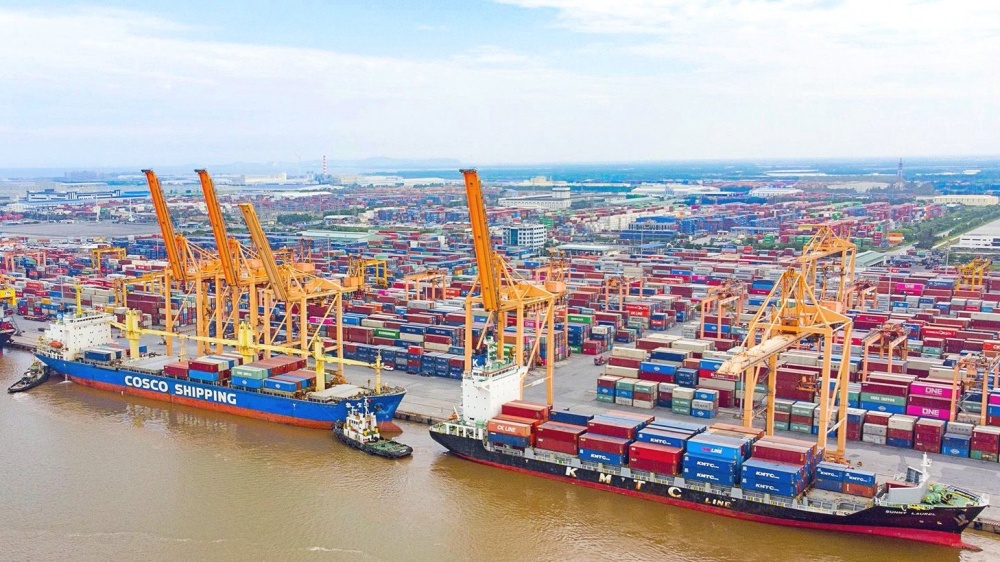In 2024, Vietnam's economy will continue to face many difficulties and challenges, with GDP growth forecast at around 5.5% - 6.0%. Maintaining a stable macroeconomic environment, reducing the burden on businesses that have to suspend operations, and supporting businesses to operate more effectively are the Government's top priorities at the moment.
| Resolutely deploy support solutions but must ensure system safety and macroeconomic stability. Commodity prices fluctuate in opposite directions due to a series of macro risks. |
Many challenges, GDP growth may be below target
This is the assessment made by Dr. Nguyen Quoc Viet, Deputy Director of the Vietnam Institute for Economic and Policy Research (VEPR) at the seminar "Policy Dialogue: Stabilizing the gold market, maintaining macro, creating momentum for recovery in an uncertain context" held last weekend. According to the report "Vietnam Economic Outlook 2024: Maintaining macro, creating momentum for recovery" by VERP presented by Dr. Viet at the seminar, economic developments in the first 4 months of the year showed some bright spots, opening up positive prospects for growth this year, from the recovery of import and export leading to the growth of the industrial production sector and trade surplus of goods; to foreign investment continuing to grow positively...
 |
| Exports recover positively, followed by domestic production |
However, this year, Vietnam's economy continues to face many external challenges such as: the Fed delays cutting interest rates; geopolitical conflicts in the world are complicated and prolonged, affecting Vietnam's exports, imports and production... Notably, domestically, there are still factors that make economic recovery not really sustainable: The industrial and construction sectors are growing again but the PMI index shows that the recovery is not yet solid; Domestic consumption is still increasing but total retail sales of goods and consumer service revenue is decreasing compared to the same period last year; Businesses are facing many difficulties, with the number of businesses withdrawing from the market being 1.5 times higher than the number of new businesses; Credit growth in the first quarter of 2024 is the lowest in the past 10 years... Meanwhile, push costs such as increasing prices of many types of raw materials and public services, real estate bubbles in some housing segments (apartments)... may cause additional inflationary pressure at the end of the year. In fact, the CPI in April 2024 increased by 4.4%, approaching the target ceiling set by the National Assembly.
Looking at the prospects for 2024, international organizations such as the WB, IMF, AMRO, etc. mostly forecast Vietnam's economic growth to reach about 5.5% - 6.0% compared to 2023. "With caution due to the analyzed factors, growth dynamics from both supply and demand and comparing the annual forecasts of international organizations, we cautiously forecast GDP growth within the lower range of the growth target set for this year", said Dr. Nguyen Quoc Viet, adding that maintaining a stable macroeconomic environment, reducing the burden on businesses that have to temporarily suspend operations, and supporting businesses to operate more effectively are the top priorities of the Government during this time.
Focus on removing difficulties for businesses
Along with that, to promote economic recovery and growth, one of the recommendations made by VERP experts is to prioritize policies and reforms to remove difficulties, reduce burdens for businesses, build confidence in the investment environment to encourage businesses to return to the market and expand their scale. Special support policies for businesses need to be specific and feasible (such as the quite successful export support policy). In the long term, we need a comprehensive policy to improve labor productivity, business competitiveness and economic competitiveness, which is a prerequisite to promote and improve the quality of Vietnam's growth in the next period.
| Sharing at the seminar, Dr. Can Van Luc, Chief Economist of BIDV, agreed with the assessment that the economy is recovering but still unevenly and unsustainably. However, this expert forecasts that economic growth this year at 6.0% - 6.5% is relatively feasible. In addition, although inflation this year has increased pressure, it is not worrying and can be completely controlled at 4-4.5% as the target. Regarding credit, after the first two months of the year with difficult growth partly due to seasonal factors, in the last two months it has recovered very well and is expected to grow by 13-14% for the whole year. |
Due to the weak domestic consumption momentum, it is necessary to continue reducing VAT in 2024 and consider expanding the scope of application. There should be more specific programs and policies to stimulate consumption, and it is necessary to directly support consumers in paying for products/services, especially to orient consumption towards green, clean, and environmentally friendly consumption trends, contributing to the implementation of the Net Zero commitment by 2050.
In addition, it is necessary to ensure harmony and efficiency in the target of credit growth to support production and business for enterprises in particular, promote consumption and restore growth in general; while still ensuring credit safety of the financial system. Promote the diversification of capital and investment channels other than bank credit (improve the efficiency and transparency of the stock and bond markets, other capital channels associated with green credit, equitable energy transition, financial leasing, etc.). In addition, experts also recommend focusing on increasing public investment disbursement to ensure progress and concentration, especially for important infrastructure projects; enhance the independence and autonomy of the economy and of Vietnamese enterprises, while promoting the effectiveness of free trade agreements and the ability to integrate and participate more deeply in the global economy; perfecting the national digital transformation strategy, promoting real value-added factors of the digital economy (such as software technology, platform business, e-commerce, etc.) to create innovation momentum, thereby shifting the growth model towards productivity and labor efficiency, while diversifying capital channels for the economy.
Source: https://thoibaonganhang.vn/giu-vung-vi-mo-tao-da-hoi-phuc-151818.html






























































































![[Infographic] In 2025, 47 products will achieve national OCOP](https://vphoto.vietnam.vn/thumb/402x226/vietnam/resource/IMAGE/2025/7/16/5d672398b0744db3ab920e05db8e5b7d)





Comment (0)